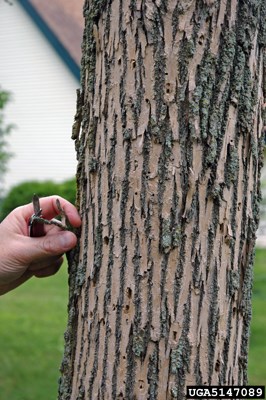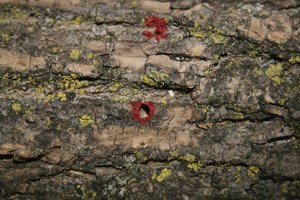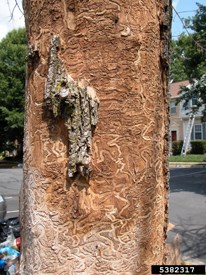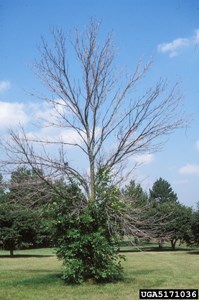
Art Wagner, USDA APHIS PPH, U.S.A. It's hard to detect EAB in newly infested ash trees. One of the first signs may be jagged holes made by woodpeckers feeding on the immature insects in their worm-shaped larval stage. 
Sue Ford/NPS After a tree has been infested for a year, you might see D-shaped holes, 3-4mm in diameter, made by adult beetles emerging from branches and tree trunks. 
Eric R. Day, Virginia Polytechnic & State University, U.S.A. The bark may split vertically, above larval feeding galleries. When the bark from an infested tree is removed, you can see these S-shaped tunnels, made by the larvae feeding on the tree. As the larvae grow, the tunnels they make by eating get wider. These galleries are filled with a fine, sawdust like frass (excrement) left behind as the larvae feed on the tree. 
Daniel Herms, The Ohio State University, U.S.A. The feeding galleries stop nutrients and water from getting to all parts of a tree during the summer. Eventually, the leaves wilt, and the tree canopy begins to thin out as branches die. After two years of infestation many trees lose about 30% to 50% of the canopy. The tree dies after 3-4 years of infestation. As they die, trees may grow shoots from their trunk to compensate for the dying branches above. Next |
Last updated: April 10, 2015
